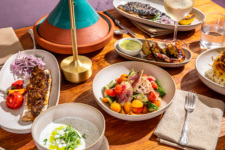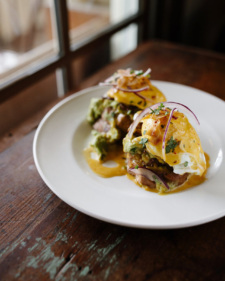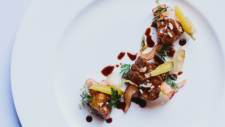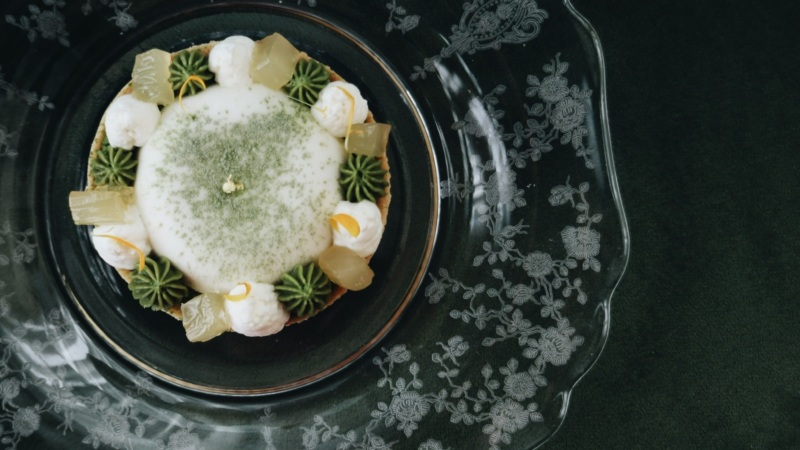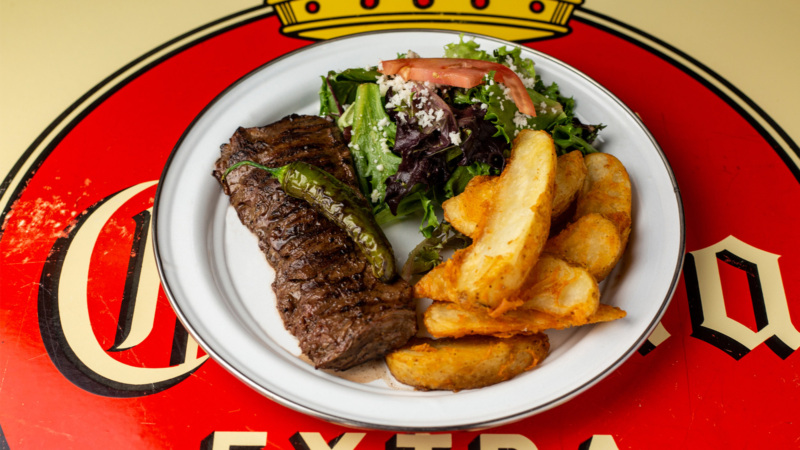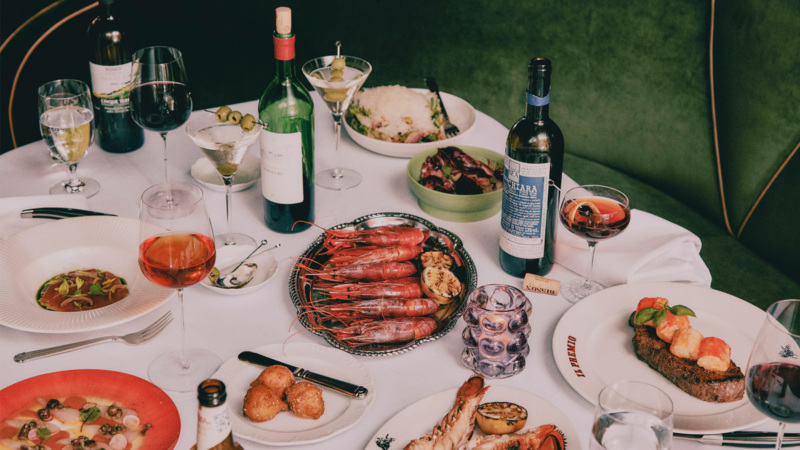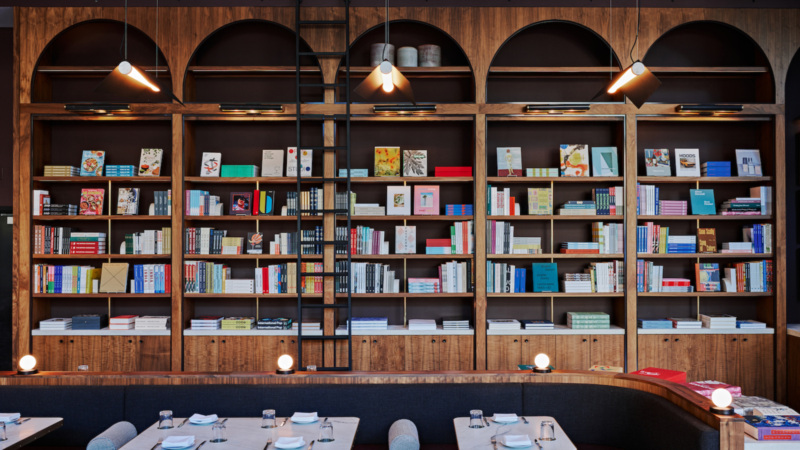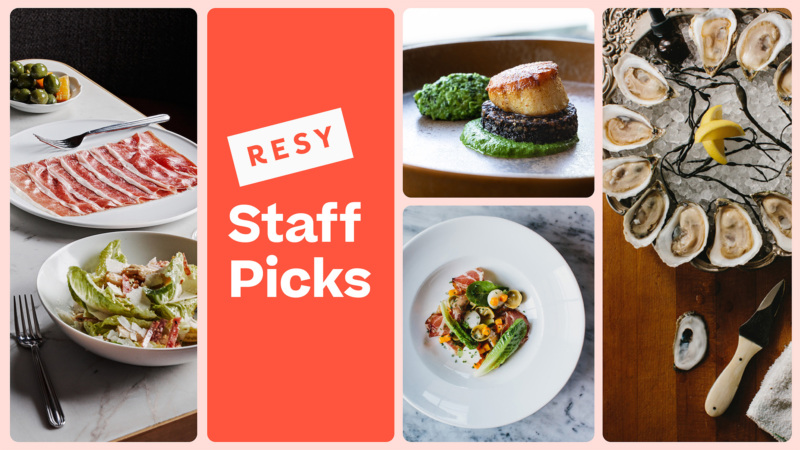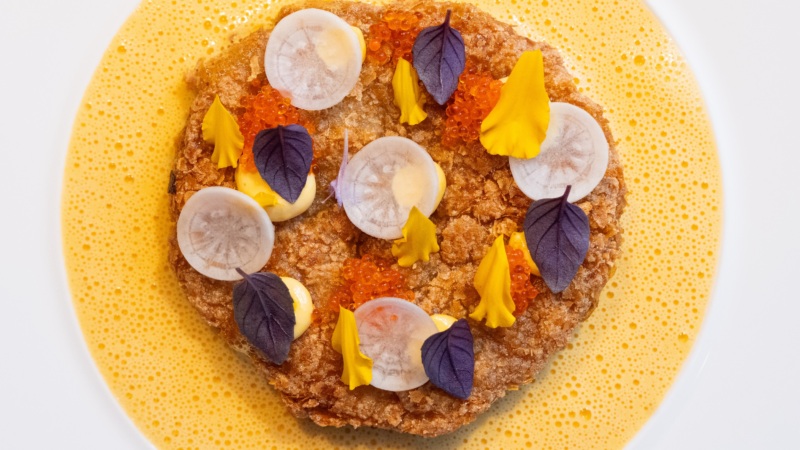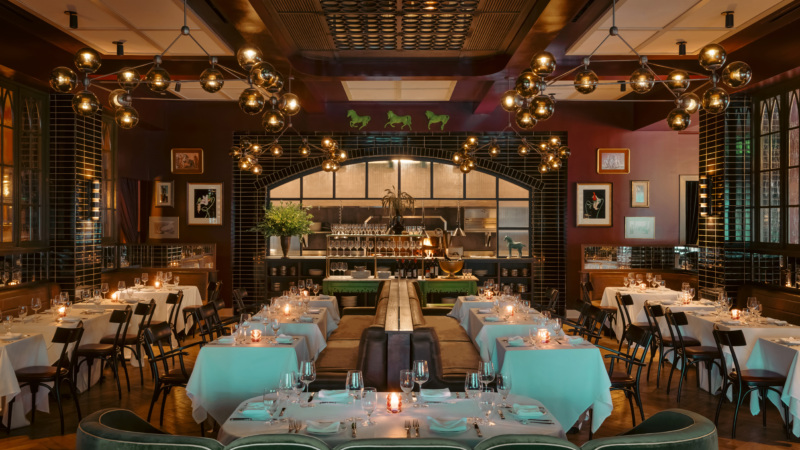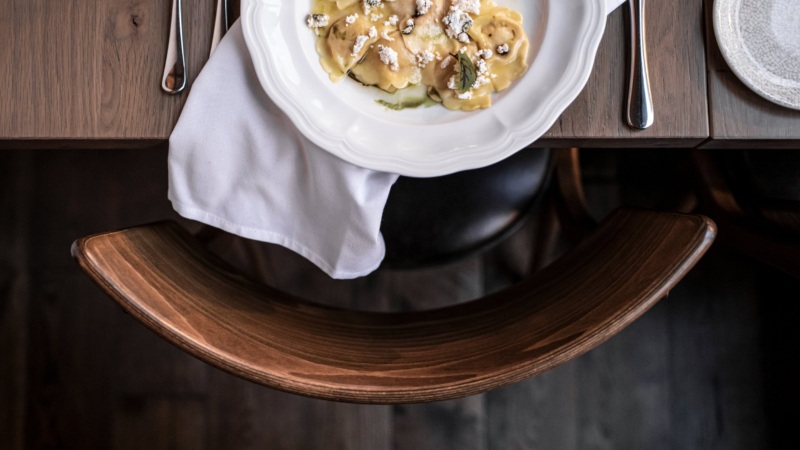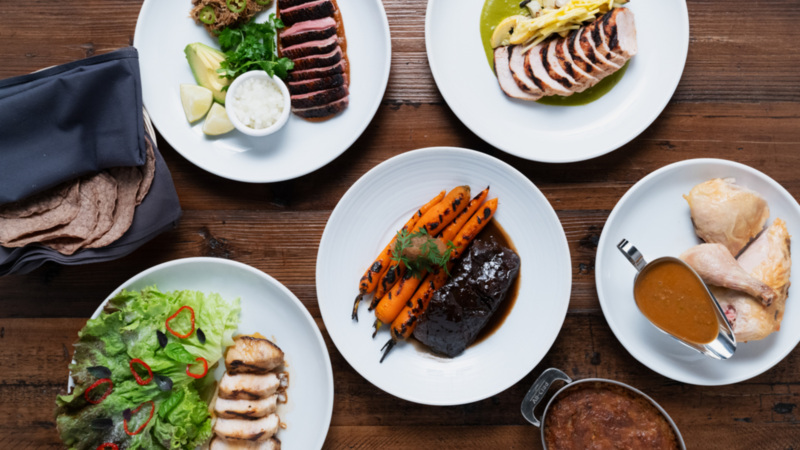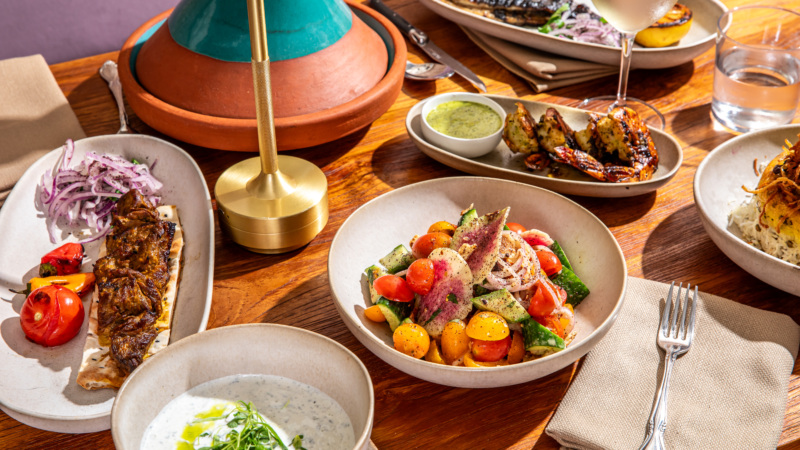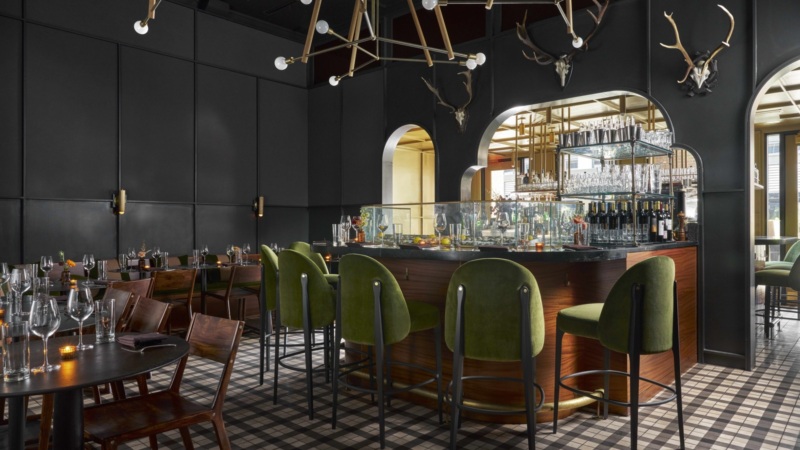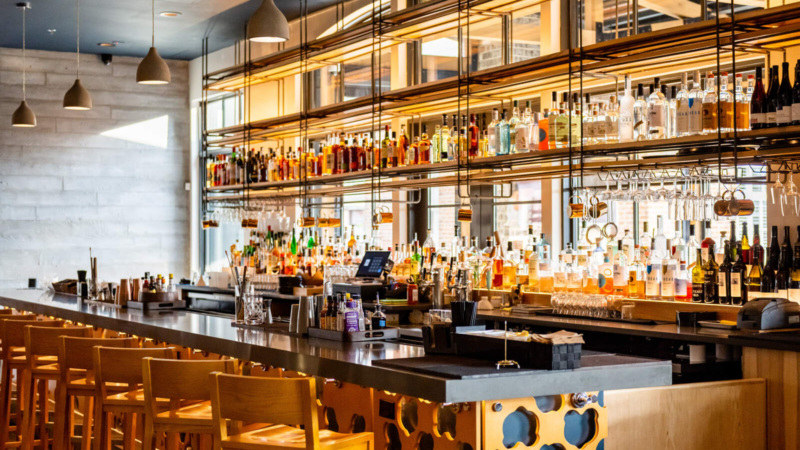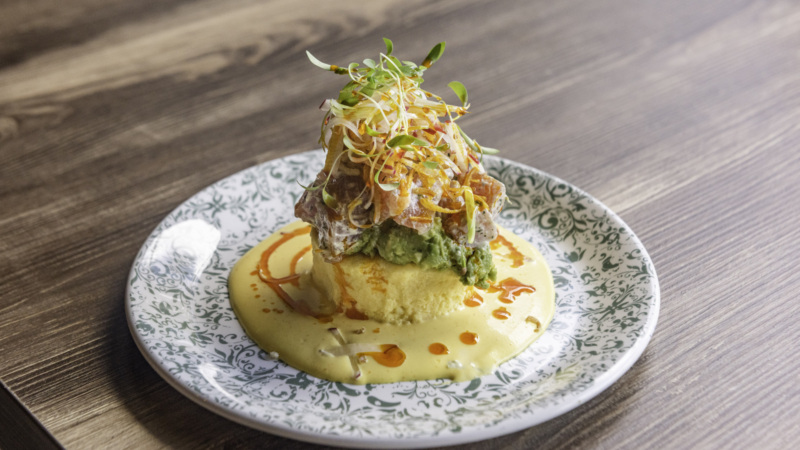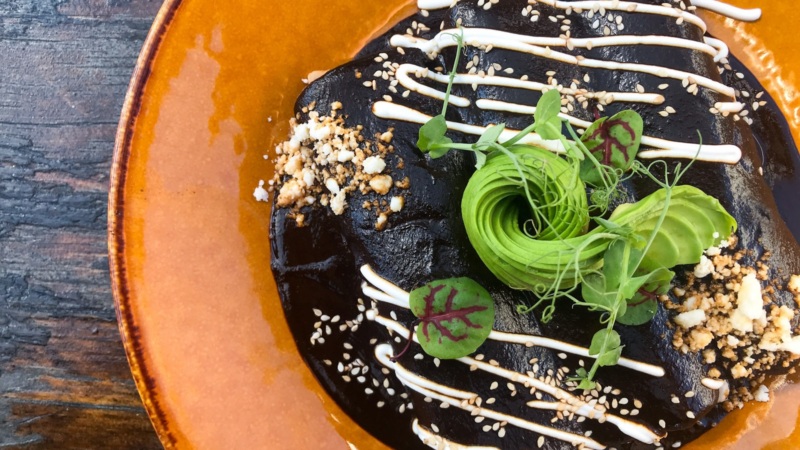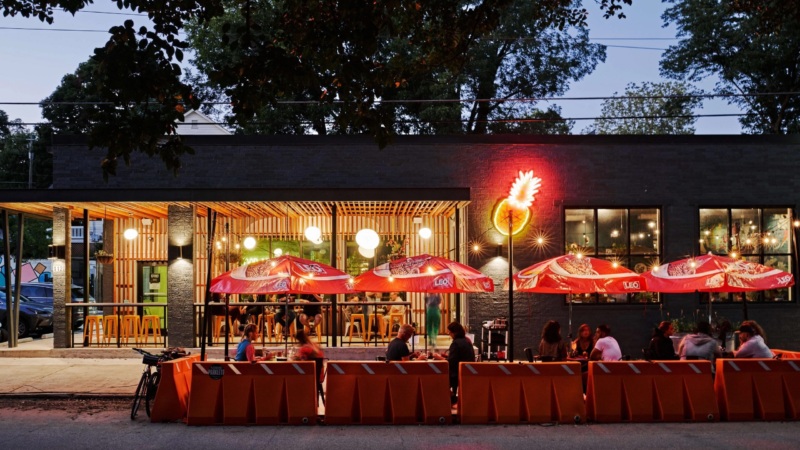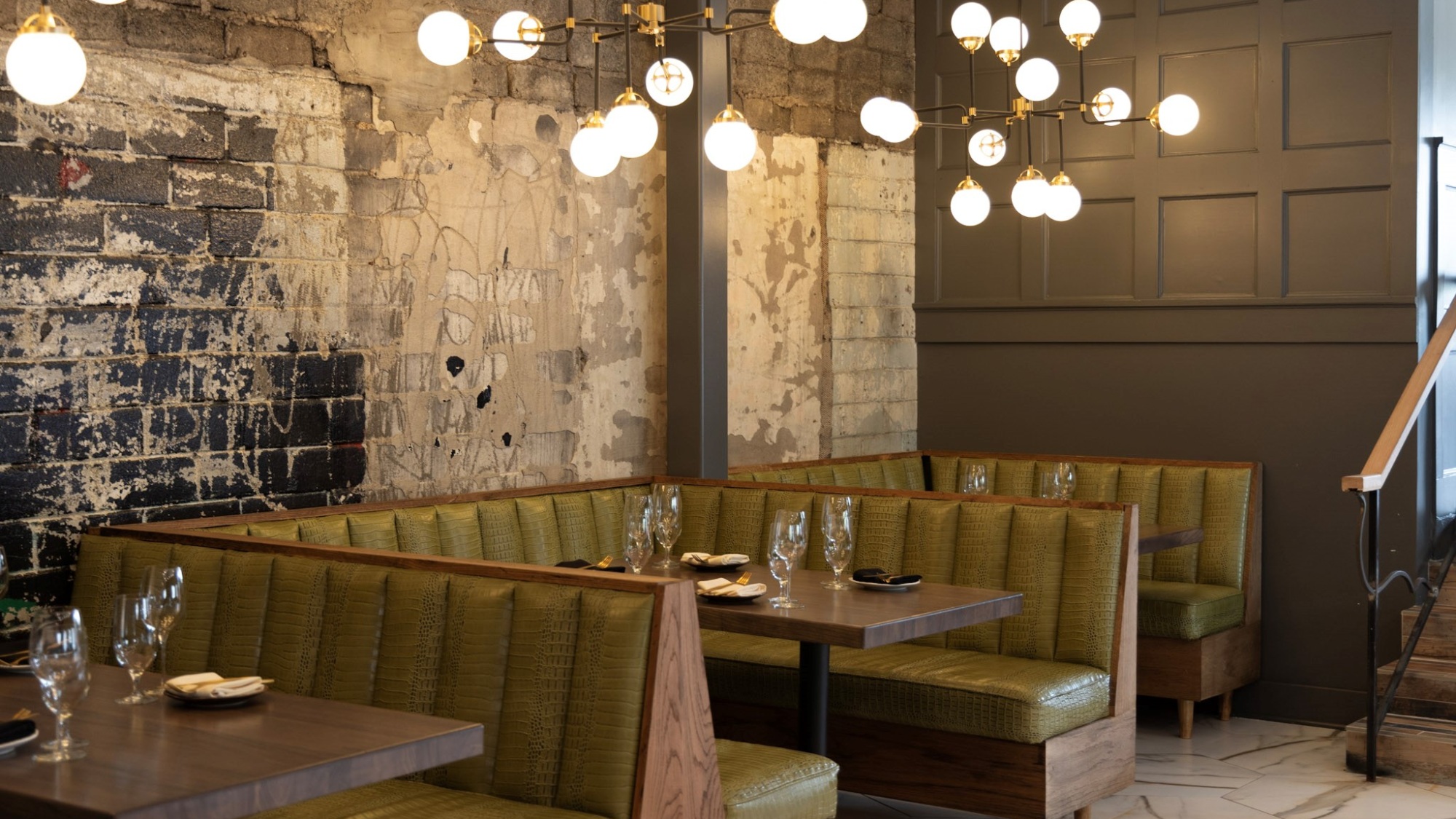
Six Years in the Making, Auburn Angel Is as Sweet as Auburn Avenue Itself
It was early on a quiet, overcast Sunday evening in Sweet Auburn when I visited Auburn Angel for the first time. Gray skies and air thick and sticky with the Georgia summer hurried me past the nondescript storefront façade facing historic Auburn Avenue, the street Martin Luther King, Jr. made famous, and I barely noticed the covered and gated patio, finding out later, to my surprise, it’s big enough to seat 60.
And being egregiously late due to decision paralysis over the ample free street parking and paid lot (and having met a dog), I rushed past the grill pit from the space’s former life as the Auburn Avenue Rib Shack.
I knew the grill pit was a feature that proprietor and longtime Atlanta restaurateur Asa Fain was particularly proud of, a thoughtful preservation of a space that’s been a cornerstone of the Black business community in Atlanta, in one of the nation’s most historic African-American neighborhoods. But it wasn’t until I had a chance to sit and take in the elegance of my surroundings exactly how mindful Fain was when it came to honoring the story of this space, and appreciate how it took six grueling years for Auburn Angel to emerge from the charred ashes of the grill that smoked ribs for the likes of patrons as giant as MLK and John Wesley Dobbs.
“Since 2018, when I purchased this building, I’ve daydreamed, planned, and executed, with the help of many people, my vision for Auburn Angel,” Fain has said. At that point, it had sat vacant for four years already, a challenge for any buyer due to its historic significance. Approval from the Georgia Historic Preservation Division, the Urban Design Commission, and others were required before a finger could be lifted, and the requirement for restoration, as opposed to blank-slate construction, created limitations even before COVID-19 essentially shut down their construction materials pipeline.
But in Sweet Auburn, dreams prevail, and Fain, with his partner and chef Robbie Pacheco, finally opened the restaurant’s doors just this April.
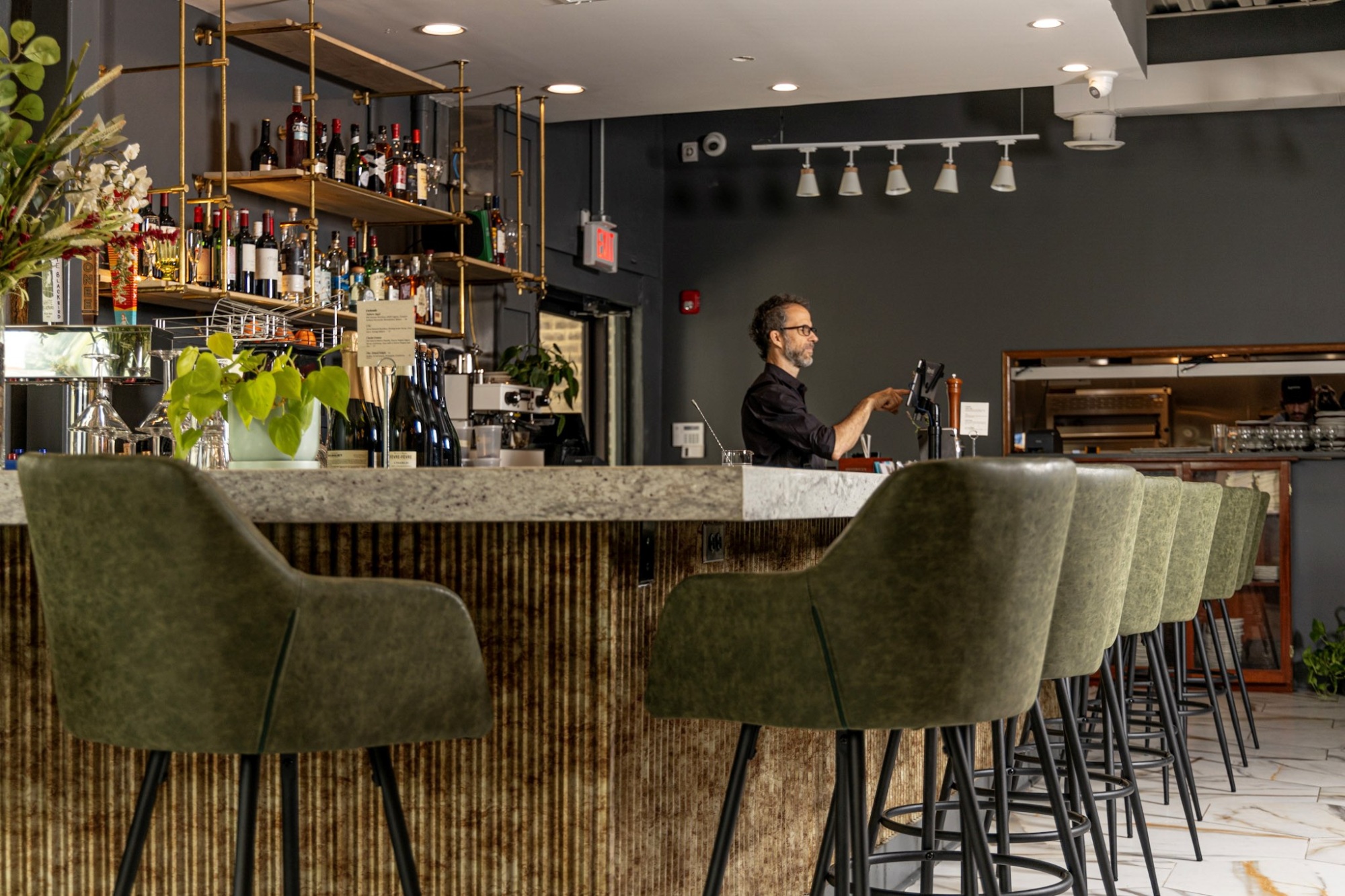
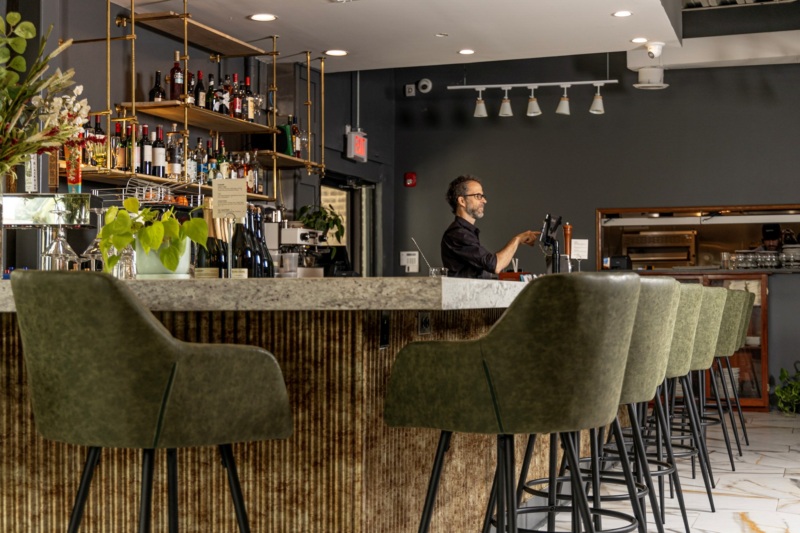
Within, beyond that grill pit, designer Patti Krohngold has created a stunning space that seamlessly ties eras together. Sputnik-style chandeliers offer a modern-retro vibe as they illuminate wide olive booths near the expansive bar. Barstools dressed in deeper forest shades are on spindly legs — all the better to see the discreetly sparkling gold accents beneath the stone top.
A few steps up into the main dining room, decades of paint peel gently back from concrete walls in thin layers, those colors echoed in the comfortable tweed upholstery of the 60-seat space and the weathered, multi-colored floor planks. Here, through the storefront windowpanes, waning sunshine outside lent a platinum glow to the golden hour, perfect for the cooler color palette of the dining room where I stood, in contrast to the warmer tones of the bar area.
***
As I settled in, jazz standards and Sinatra tunes played in the background. The strains were low enough to set the stage for an elegant and intimate date, but loud enough to muffle any sound from the open expo window of the kitchen that has been relocated to the back of the building.
However, I had hoped to get a peek at what was going on behind those semi-closed doors, knowing Pacheco was bringing his experience from restaurants like Restaurant 356 and Cardamom Hill to the table. The intent of the menu is to, at any given time, “mirror the melting pot of cultures found in Atlanta, drawing inspiration from French, Chinese, Lowcountry, and Indian cuisine,” he’s said, promising “a crossroads of [his] culinary journey,” where “guests can expect an ever-evolving menu” based on seasonal and local availability, as “Chef doesn’t like to play favorites,” I was warned.
It’s that liberty to play that motivated him to take this long leap with Fain. He wanted to become part of a smaller, more controlled environment where he could connect on a deeper level with his food, farmers, the people of Atlanta, and the chefs he works alongside; opening Auburn Angel was the “convergence of passion and ambition,” they call it.
This earnest approach appealed to acclaimed pastry chef Pamela Moxley, too, who has joined Pacheco in Auburn Angel’s kitchen.
“I was raised in New Hampshire, where my family did a lot of gardening … we were always baking and cooking seasonally. And I went to culinary school in Seattle, where farm-to-table was the scene.” Working at the likes of Miller Union, Floataway Café, and Craft in Atlanta has only further ingrained this natural inclination for the James Beard semifinalist.
Altogether, the team has placed an angel on Auburn Avenue’s shoulder. Now here’s what to order to hear it sing.
***

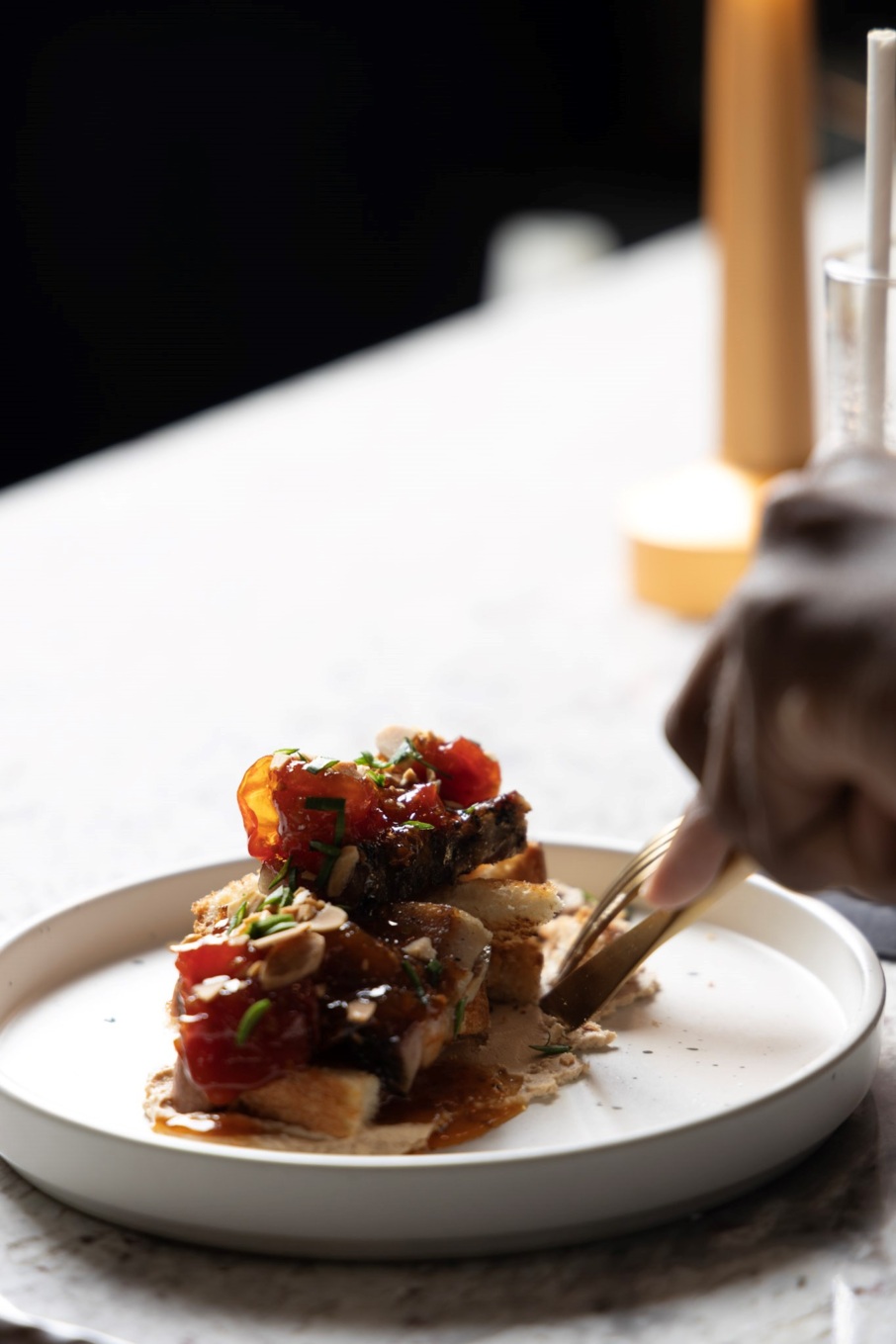
Cussin’ Granny
Herradura Blanco tequila, Cointreau, chile-agave syrup
Many of the drinks here are named after a specific individual — the “Unc,” for example, is a nod not to the Uncle Nearest bourbon in the drink, but to a gentleman known in the community, the bartender confided. They freshen him up with lime juice, orange bitters, and pomegranate-based grenadine. But Cussin’ Granny’s a great friend to have at the table, bringing a little heat, a little sass, and a good bit of class to the group as you ponder the menu.
Herradura Blanco tequila is the base spirit, supported by Cointreau, but it’s the Hatch green chile-agave syrup and Hatch green chile salt rim that gives it a slow-warming heat that somehow never builds to overpower your taste buds. Finally, a splash of yuzu keeps things light.
PB&J
Brioche, tomato jam, almond butter
It behooves you to read the menu closely at Auburn Angel, where the expected is traded off for delightful plot twists. This appetizer is a prime example, where the PB stands for pork belly. At once caramelized crisp but also tender, not too fatty and not too lean, this ingredient is smoked for yet another nod to the space and a reverence for texture. It’s served on buttery brioche toast that’s generously slathered with almond butter. Topped with toasted almond slivers and a sweet, chunky tomato jam that’s simply to die for before being garnished with scallions, this sets the bar high for a superb meal.
Lamb Burger
Havarti cheese, ramp aioli, red cabbage, yucca fries
The menu lists this item under “Small Plates,” which is laughable, to say the least. Lamb shoulder is ground to order for this double-stacked burger, which is impressive enough even without the drama of its accoutrements. The patties are held between toasted country bread sliced thick and a precarious steak knife anchoring the center. Gooey Havarti cheese oozing down the side makes it a modern multi-culti melt, but lashings of ramp aioli and vividly stewed red cabbage play incredibly well with the juicy lamb as herb-dressed, paper-thin yucca fries pour over the side of the plate.
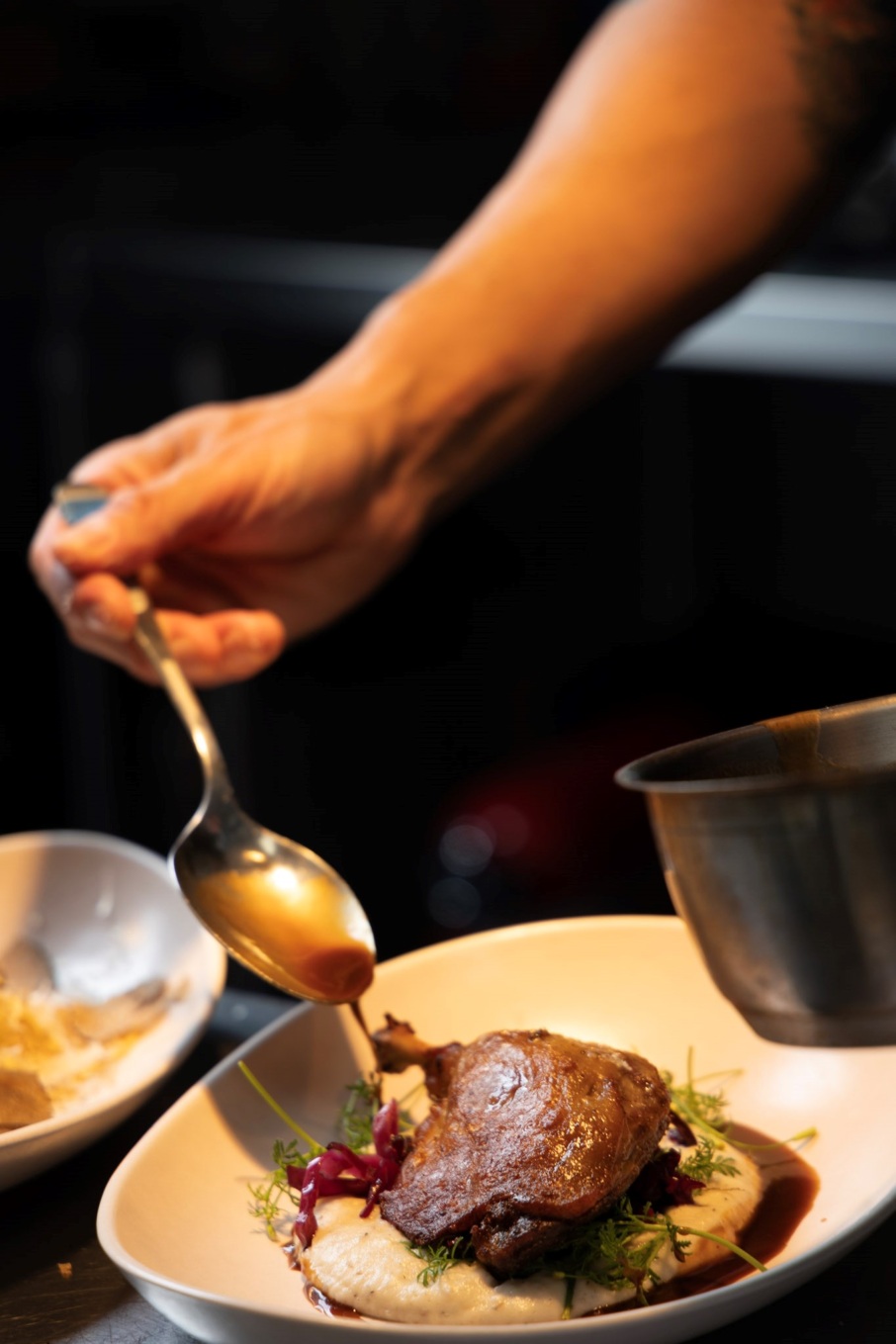
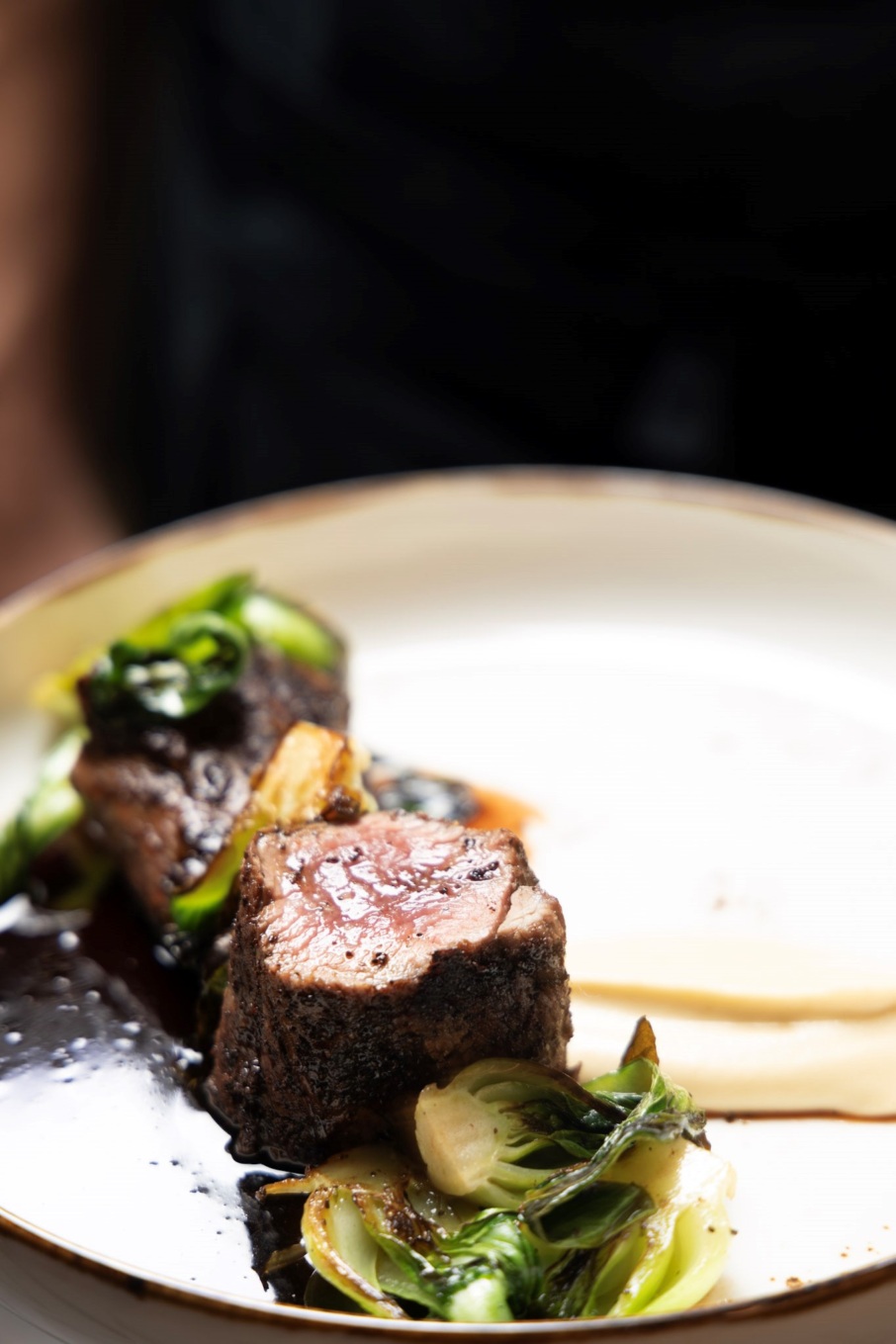
Duck Confit
Truffled mash, red cabbage, Luxardo cherry jus
With a menu so full of surprises, you could be forgiven for feeling like a lame duck for ordering this. Duck confit is a preparation that showcases a flavor so distinctive and strong that it’s hard to be … well, surprised by it. But like a good roast chicken, a perfect prep is what makes it memorable.
The meat is succulent and tore from the bone; the skin crackled and cut away clean. More of that stewed red cabbage accompanied it, a nest over very lightly truffled mashed potatoes that became an aside compared to the loud flavor of the duck, especially when the bites are swept through the Luxardo cherry jus.
Petite Filet
Celery root purée, Bordelaise sauce, bok choy
Espresso-rubbed steaks and cocoa-enhanced sauces on red meat are nothing new, but they’re often supporting actors rather than prominent elements. This is not the case with this filet.
The rub is more like a robe around the tender beef, served medium rare — the temperature of the chef’s choosing (a prerogative he takes for the lamb burger as well). Cut into halves, the steak is presented as twin cubes of hues that graduated from rich brown from the rub to a rainbow of ruby and port into the juicy center. The celery root purée adds warmth and mildness, the bordelaise sauce is rich and traditional, and a few sautéed pieces of Shanghai bok choy work well as a palate cleanser and textural counterpoint.
White Fig Brown Sugar Pie
Caramel ice cream, brown sugar crumble
Originally a dish on the preview menu, the pie has officially joined the roster as the latest dessert. With this, Moxley piles juicy white figs — slightly tangy and nuttier than black figs — on a shortbread crust and tops it with a brown sugar crumble. The version I had featured candied pistachios, too, generously strewn across a scoop of Chantilly cream. The final form offers caramel ice cream, a good choice to counter the natural hint of tartness in the white figs.
Su-Jit Lin is a rehabilitated New Yorker, former New Orleanian, and current Atlantan, in addition to being a travel, food, and lifestyle writer. She has contributed to EatingWell, HuffPost, Epicurious, The Takeout, Eater, The Kitchn, VinePair, Thrillist, Food & Wine, Serious Eats, Southern Living, and more. Follow her on Instagram. Follow Resy, too.



